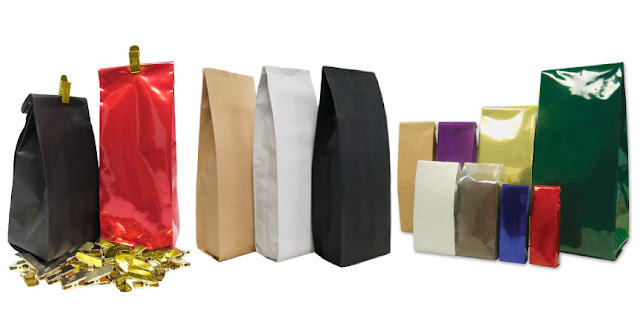Cold Chain Packaging Market Is Estimated To Witness High Growth Owing To Increasing Demand for Temperature-Sensitive Products
 |
| Cold Chain Packaging Market |
The global Cold Chain Packaging Market is estimated to be valued at US$ 22.39 Bn in 2021 and is expected to exhibit a CAGR of 9.70% over the forecast period 2023-2030, as highlighted in a new report published by Coherent Market Insights.
Market Overview:
Cold chain packaging refers to the packaging solutions used for maintaining the
integrity and quality of temperature-sensitive products, such as
pharmaceuticals, vaccines, chemicals, food, and beverages, during storage and
transportation. These packaging solutions provide insulation and control the
temperature within a specified range, protecting the products from thermal
fluctuations.
The need for cold chain packaging arises due to the increasing demand for temperature-sensitive
products, which require strict temperature control to maintain their efficacy
and quality. The pharmaceutical industry, in particular, relies heavily on cold
chain packaging to ensure that drugs and vaccines remain stable and effective
throughout their supply chain. Additionally, the growing e-commerce industry,
with its complex supply chain and last-mile delivery challenges, is driving the
demand for efficient cold chain packaging solutions.
Market Key Trends:
The key trend driving the growth of the cold chain packaging market is the
increasing adoption of advanced insulation materials. Traditional packaging
materials, such as expanded polystyrene (EPS) and polyurethane (PUR), are being
replaced with more advanced materials, such as vacuum insulated panels (VIP)
and phase change materials (PCM). These advanced materials offer better
insulation and temperature control, allowing for longer product shelf life and
reduced spoilage.
Furthermore, there is a growing demand for eco-friendly and sustainable
packaging solutions in the cold chain industry. Manufacturers are developing
packaging materials and designs that are recyclable, reusable, and
biodegradable, in order to reduce the environmental impact of cold chain
operations. This trend is driven by the increasing awareness of environmental
issues and the need for sustainable business practices.
In conclusion, the global cold chain
PEST Analysis:
Political: The political factors influencing the cold chain packaging market
include government regulations and policies regarding food safety and
transportation. Governments may impose strict regulations on cold chain
logistics to ensure the quality and safety of perishable goods.
Economic: The economic factors impacting the market include the growth of the
global pharmaceutical and food industries. As the demand for
temperature-controlled packaging increases, so does the need for cold chain
packaging solutions. Economic factors, such as disposable income and consumer
purchasing power, also play a role in the market's growth.
Social: Changing consumer lifestyles and preferences are influencing the demand
for perishable goods. Consumers are increasingly demanding fresh food products
and pharmaceuticals with longer shelf lives. Additionally, increasing
urbanization and the growth of e-commerce have contributed to the expansion of
the cold chain packaging market.
Technological: Advances in technology have significantly impacted the cold
chain packaging market. Technological innovations, such as smart packaging
solutions and temperature-sensitive labels, have improved the efficiency and
reliability of cold chain logistics. Automation and IoT-enabled devices have
also enhanced tracking and monitoring capabilities, ensuring the integrity of
perishable goods during transportation.
Key Takeaways:
The global
cold chain packaging market is expected to witness high growth,
exhibiting a CAGR of 9.70% over the
forecast period of 2022-2030. The market size for 2021 was estimated to be US$ 22.39 billion. This growth can be
attributed to increasing demand for temperature-sensitive products in the
pharmaceutical and food industries.
In terms of regional analysis, Asia Pacific is projected to be the
fastest-growing and dominating region in the cold chain packaging market. The
region's rapid urbanization, increasing middle-class population, and expanding
pharmaceutical industry are driving the demand for cold chain packaging
solutions. Additionally, government initiatives to improve food safety and
invest in cold chain infrastructure further contribute to the region's growth.
Key players operating in the cold chain packaging market include Pelican
BioThermal LLC, Sonoco Thermosafe, Cold Chain Technologies Inc., Cryopak,
Sofrigam Company, Intelsius (A DGP Company), Coolpac, Softbox Systems Ltd,
Clip-Lok SimPak, and Chill-Pak. These key players contribute to the market's
growth through their innovative cold chain packaging solutions and strategic
partnerships with pharmaceutical and food companies.
Overall, the cold chain packaging market is driven by political, economic,
social, and technological factors. The market is projected to grow
significantly over the forecast period, with Asia Pacific emerging as a key
region. Key players in the market continue to innovate and collaborate to meet
the increasing demand for temperature-controlled packaging in various
industries.



Comments
Post a Comment